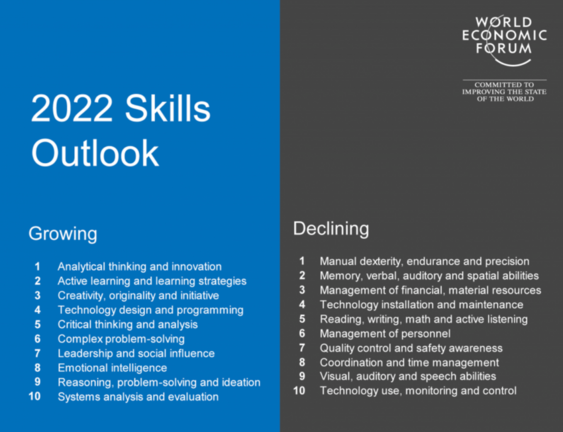In Part one of this series on our exploration of funding lifelong learning, we explored the definition and concepts surrounding lifelong learning, from the perspectives of business, government and policy makers. Particularly, in this article, our aim was to understand various funding mechanisms to deploy lifelong learning by businesses and governments in various regions and countries, and how they work for each particular context. These views were based on a GAN organized, virtual panel discussion with a few key thought-leaders who are at the heart of transformative change in our labour markets. Bettina Schaller, Head of Global Public Affairs, The Adecco Group, moderated the discussion between:


(From the left to the right)
· Natacha Juda, Director, Inter-professional Council for Training, State of Geneva, Switzerland
· Takaaki Kizu, Skills and Development Officer, Skills and Employability Branch, ILO, International Labour Organization (ILO)
· Kathryn Porter, Director of Youth Strategy for Europe, Middle East and Africa (EMEA), Hilton
· Priscila Chaves Martinez, Co-founder and Director, Innova10x
These individuals are dealing head on with how to connect people and business with the 21st century skills we need to thrive, especially in an age where technology, demographics, globalization and climate change are impacting the composition of workforces, and the nature of skills that are needed. In this second part of this article, we focus on the challenges and solutionsto enable the funding of lifelong learning and the role that business, government, policymakers and individuals can play.
“We need to replenish skills throughout a working career, and this calls for revisiting the models and concepts of lifelong learning to create the future we want.” – Guy Ryder, ILO Director-General
Question:
In the beginning of this conversation, we explored the vast array of lifelong learning programs offered by both businesses and governments, and how they are financed. I’d like us to delve a bit deeper into these programs and discuss some of the challenges and lessons learnt, that you’ve come across, from your perspectives of government, business or policy maker.
The number of education and training vouchers in Geneva is increasing every year, which means that we’ve achieved part of our goal to reach more people who are interested in taking part in lifelong learning programs.
By law, we are required to carry out surveys and assessments to measure the effects of the voucher system. According to our survey, 70% of beneficiaries of education vouchers, declare that they would not have participated in a lifelong learning course if it weren’t for the voucher. This shows that the voucher is a great motivator in participation rates for continuing education and training.
Our main challenge however, is outreach to lower-skilled workers. Only 25-30% of beneficiaries are considered to be part of this group, meaning that they do not have upper secondary qualifications. This tells us that we may need to focus more on outreach to vulnerable groups, such as immigrant workers.
In the UK, one of the main policies we have been grappling with as employers is the recent 5% tax levy for employers that bring in a revenue of over £3 million per year. This levy is meant for the use of apprenticeship and training programs to skill our domestic workforce. There is some flexibility allowed in the use of these funds such as a transfer of the funds within our supply chain. For example, as an employer, we can transfer some of these funds for the purpose of strengthening skills development within our supply chain. This is all part of the UK’s apprenticeship reform scheme.
Our definition however of apprenticeship goes beyond entry-level programmes. In the UK, we are currently developing new apprenticeship programs which can also extend to those seeking a higher-level, or Master’s type degree programme. There is some flexibility in these types of programmes whereas one can partake in a university programme while participating in an apprenticeship programme.
These two points – on the levy transfer and the development of new types of apprenticeship programmes going beyond entry-level work, has opened many doors in the UK. The first is for those seeking an apprenticeship as an alternative to an otherwise expensive university degree, and for SMEs who would otherwise not have the funds for skilling. The levy transfer can also be used to fund national retraining schemes. This is meant to help workers adapt to the changing pace of work.
Although we are not a funding agency and therefore not an actual implementer of lifelong learning funding schemes as our colleagues here who are representing both business and government, what we have observed, is the importance of cultivating a mindset for lifelong learning. Individuals and employers need to be convinced of the importance of investing time and efforts in lifelong learning. Even if financial mechanisms are in place, the individuals and enterprises may not take advantage of these types of programmes unless they are first convinced of its need, this is perhaps especially true for lower-skilled workers and smaller firms.
Taking for example, the viewpoint of our colleague from GAN Belgium who expressed in the first part of this series on lifelong learning, that focused on mindset, many people didn’t use the vouchers because they didn’t feel the need to. Promoting a culture of lifelong learning is the main factor for motivating higher and lower qualified workers, along with smaller firms. We all need to be convinced of the value of investing time and finances in lifelong learning to take part.
On the decentralised models that I referred to previously (in Part one of this article), and are still relatively new, the main challenge is awareness. Going back to what Takaaki mentioned, the general public needs to be convinced that this is important. This would allow us to generate more options so that lifelong learning becomes a trend.
What has been very well documented and discussed in Costa Rica, has been partnerships between the private sector and government. Seven to eight years ago, a massive effort from private companies took place to invest in roles that would be beneficial for the country. For assistance, tech companies asked the government to invest heavily in cyber security training, knowing that this would be essential for the country. However, the private sector has had to adapt quickly and as a result, sought public private partnerships and created training programmes own their own to fill this skills gap.
This is a case in point to show that in many countries, governments should listen to the private sector on what the needs are and react. There is a large opportunity in Latin America to skill the workforce but governments are only starting to recognize this as an issue now. As large companies are already starting to invest, one opportunity for governments would be to be able to match what companies are doing and invest more in systemic change, such as education.
Question:
If you could choose a key recommendation, going back to the spirit of the GAN being a public-private partnership, what would it be?
Kathryn Porter: My recommendation echoes that of the GAN model – because of the complexity of lifelong learning i.e. formal vs non-formal, qualifications vs non-qualifications, certification and accreditation, etc., and given the importance of lifelong learning for the future of work and economy growth, this has to be a public-private collaboration, including with the individuals themselves. And this is more than just about the employees – it’s important for individuals, with or without an employer to keep learning.
Priscila Chaves: For governments, I have two recommendations. The first is to recognize that change can happen only if we are flexible and that there is a lot that non-traditional educational opportunities can offer. The second would be to make available the data for companies and civil society, so we can better understand our demographics to tailor better solutions.
For businesses, I have another two recommendations. The first is to continue investing in general talent development, and not just one’s own workforce development. The second is visibility of what is to come and what will be needed. Business should be specific about what their skills needs are.
For individuals, it is to have ownership of their educational and development journeys.
As Kathryn and Priscila already gave viewpoints on the roles for business, governments and the individual, I would like to focus on the role of public-private partnership to finance lifelong learning. As an example, in the State of Geneva, we have a foundation for vocational training and continuing education. This fund is financed by private companies in the canton of Geneva and by the State and provides financial support for vocational training and continuing education of the local workforce. This is an interesting model as it encourages stakeholders to work together, and helps to pinpoint and prioritise where there are skills shortages. The fund also aims to help professional organisations identify mutations that could lead to new training needs in their sector.
One big challenge we have which is probably a challenge for many around the world, is that we are lacking tools for skills anticipation. We do have financial incentives, but it is difficult to know in advance and to anticipate where to invest, to strengthen education and skills for the future of work.
As our colleagues had already covered so many points, it will be difficult to add anything else here. However referring to the ILO’s Global Commission on the Future of Work report, it is worth stressing that this is a shared responsibility, which requires active engagement from government, employers, individuals, and educational institutions. Having said that, budget for education and training has not been increasing much, especially for lower and middle income countries.
Although international data does suggest a slight increase in funding for education as a whole, the increase is not sufficient, if we are to deliver on the promise to ensure lifelong learning opportunities for all. In 42% of countries for which the data is available, less than 1% of their public education budget is spent for adult learning education. This evidence suggests that there clearly is a space for public funding to step up. Some estimates suggest that to achieve the targets for SDG 4, the current 1.2-1.3 trillion per year must be almost tripled, especially for the lower-, middle-income countries, to 3 trillion. To fill this gap, innovative solutions should be explored.
This doesn’t exclude the role of employers, as they are the entity filling the most need for re-, upskilling, so they have a responsibility and an active role to play. In the end, there needs to be incentives, and policy has to be put in place to ensure employers’ investment in training. Coming back to individuals, we feel that the responsibility has been pushed towards them increasingly over the past few years. Of course, they are the owners of their career paths, and thus they have the responsibility to invest in their own skills, but we need to have effective policies to support them.
We invite readers of this thought-piece to join the conversation. Share your ideas, recommendations and experiences on lifelong learning with a global audience, and stay tuned for SkillingNow Podcast Episode 5, capturing views, recommendations and experience from experts and practitioners who participated in a panel titled “Does work-based learning pay-off” at the 2019 Annual Meeting of the Society of Human Resource Management (SHRM).
About the SkillingNow campaign
The Campaign SkillingNow is a global platform launched by GAN, with Accenture’s support, to deep-dive into a selection of pressing topics linked with work-based learning that are essential for bridging the skills gap, and creating a skilled workforce for the future of work. Throughout 2019, we will work with our members, networks, partners and thought-leaders around the world to explore each topic and engage with broader audiences through thought pieces, podcasts, Twitter Summits, Instagram, and more.






